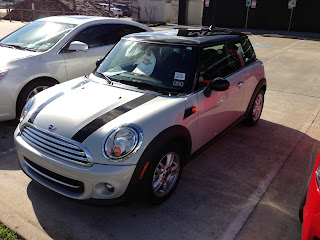The Cadillac CTS has been around since 2002, serving as the brand's mid-size luxury car. The CTS is a front-engine, rear-wheel drive car. All-wheel drive is available as an option. The CTS comes with either a six-speed manual, a five-speed automatic (first generation only), or a six-speed automatic transmission. The first generation, which was produced from 2002 to 2007, was only available as a four-door sedan. The second generation CTS, which went into production in 2007, is in its final year. The second generation CTS is available as a two-door coupe, a four-door sedan, or a five-dour wagon. There is also a tuned version of the CTS, the CTS-V, which is powered by a supercharged 6.2L V8 engine that produces 556 hp and 551 lb-ft of torque. On March 26, 2013, General Motors announced the all new third generation Cadillac CTS which will be available starting with the 2014 model year. With the new CTS comes an all new CTS-V. I have seen various versions of the Cadillac CTS at the various car events in the greater Houston area. I got behind the wheel of the CTS at the 2013 Houston Auto Show. The vesion I drove was a CTS Sedan with the six-speed automatic transmission.
On the outside, the CTS has a nice sporty luxurious exterior. It has some sleek sporty lines on it. The CTS has a luxurious interior. You know a car is luxurious when it has an analog clock on the dashboard. The CTS also features a pop-up screen. Behind the wheel, I had a decent amount of headroom and a good amount of leg room, but the seat is very firm.
The CTS is powered by a 3.6L V6 that produces 318 hp and 275 lb-ft of torque. It goes from 0 to 60 in 6.2 seconds and reaches a top speed of 150 mph. This car feels quick. It is not super quick, but it is till quick enough for highway passing and highway entry. The ride is rough. The suspension is stiff, meaning that you will feel every bump in the road. But due to the stiff suspension, the CTS is very responsive. The CTS also has good throttle response. This would make a good track car if it had a V8 engine. Prices for the CTS with the 3.6L V6 and an automatic transmission start at $43,340. The base CTS with a 3.0L V6 engine starts at $39,095. For a luxury mid-size sports sedan, that is not too expensive compared to its European rivals.
Overall, the CTS is a good car. It has good performace, a nice sporty styling, a luxurious interior, good leg room, decent leg room, and is not too expensive for what you get. The car is very responsive due to its stiff suspension. But the responsiveness comes at a price. The CTS has a rough ride. The seat is very firm to the point that it is uncomfortable. The CTS is a sports sedan and it has a sporty feel. If you do not mind a stiff ride, then I can recommend giving the CTS a test drive. But for those who want to be comfortable behind the wheel and do not like a stiff ride, look elsewhere. When the 2014 CTS hits showroom floors, expect a price drop in the 2013 CTS. Now, I also test drove three CTS-Vs and there is significant difference between the CTS and CTS-V.
CarJunkie
Photo was taken by a digital camera.
To see more car related articles, check out http://carjunkie713.blogspot.com/.
Like me on Facebook: https://www.facebook.com/pages/CarJunkies-Car-Review/120292601386720.
Follow me on Twitter @CarJunkie713



















